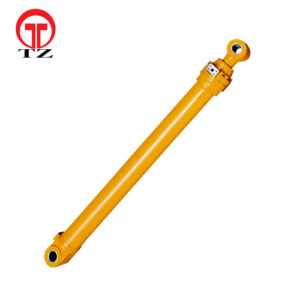The movement of a knuckle boom excavator is coordinated with other parts of the machine through its hydraulic system and control mechanisms. This synchronization ensures smooth and controlled movement during operations.
Here’s how the knuckle boom’s movement is coordinated:
- Hydraulic System: The knuckle boom’s movement is powered by hydraulic fluid pressure. The excavator’s hydraulic system includes pumps, valves, hoses, and cylinders responsible for generating the force needed to operate the boom.
- Control Inputs: Operators use control levers or joysticks in the excavator’s cab to manipulate the movement of the knuckle boom. These control inputs regulate the flow of hydraulic fluid, controlling the extension, retraction, and articulation of the boom’s sections.
- Hydraulic Cylinders: The knuckle boom consists of several linked sections connected by hydraulic cylinders. When hydraulic fluid is directed into or out of these cylinders based on control inputs, it causes the boom sections to extend, retract, or articulate, enabling the desired movement.
- Linkages and Joints: Mechanical linkages and joints connect the sections of the knuckle boom. As hydraulic fluid enters or exits the cylinders within these joints, they extend or retract, allowing for the articulation and movement of the boom.
- Feedback Systems: Some modern knuckle boom excavators incorporate feedback systems that provide information to the operator about the boom’s position, pressure, or load. These systems assist in controlling and coordinating the movement during operation.
- Safety Features and Limitations: Excavators are equipped with safety features and limitations to prevent overextension or overretraction of the knuckle boom. Limit switches or valves can prevent unsafe movements and ensure safe operation.
- Operator Skill and Training: The operator’s proficiency in using the controls effectively influences the coordination of the knuckle boom’s movement with other components. Proper manipulation of controls ensures precise and controlled movements.
- Load Management: The excavator’s load management system may also contribute to coordinating the knuckle boom’s movement, especially when handling heavy loads or performing delicate tasks.
By integrating these elements, the movement of the knuckle boom excavator is synchronized with other parts of the machine, allowing for precise, controlled, and efficient operations during excavation, lifting, or material handling tasks.
How is the knuckle boom excavator design optimized for durability and longevity in harsh working conditions?
Knuckle boom excavators are designed with several features to ensure durability and longevity, especially in harsh working conditions:
- High-Quality Materials: These excavators are constructed using high-strength materials such as high-grade steel or specialized alloys known for their durability and resistance to wear, corrosion, and abrasion.
- Robust Structure: The design incorporates a sturdy and robust structure with reinforced components, thick walls, and optimized shapes to withstand the stresses encountered during heavy-duty excavation tasks.
- Hydraulic System Efficiency: The hydraulic system, including pumps, valves, hoses, and cylinders, is engineered for efficient and reliable performance. This system withstands continuous heavy loads and provides smooth movement of the knuckle boom even in demanding conditions.
- Sealing and Protection: High-quality seals, knuckle boom excavator O-rings, and protective coatings are used to prevent hydraulic fluid leaks and protect components from damage caused by debris, dirt, or harsh environments.
- Resistance to Corrosion and Abrasion: Components are often treated with protective coatings or surface treatments to resist corrosion and abrasion, extending their lifespan in challenging working environments.
- Reinforced Joints and Linkages: The joints and linkages connecting the sections of the knuckle boom are reinforced to handle the stress and movement encountered during operation.
- Component Strengthening: Critical components prone to wear, like pivot points and pins, are designed to withstand frequent movement and heavy loads. They may feature increased strength or hardening to prevent premature wear.
- Cooling and Ventilation: Proper cooling and ventilation systems prevent overheating of key components, ensuring optimal performance and reducing the risk of mechanical failures.
- Regular Maintenance Design Considerations: Accessibility and ease of maintenance are often considered in the design to facilitate routine checks, lubrication, and servicing, minimizing downtime and maximizing longevity.
- Structural Analysis and Testing: Advanced engineering techniques, including structural analysis and rigorous testing under harsh conditions, are employed during the design phase to ensure durability and performance.
By integrating these design elements, knuckle boom excavators are optimized to endure the rigors of challenging working conditions, ensuring durability, longevity, and consistent performance in demanding construction or excavation environments.
